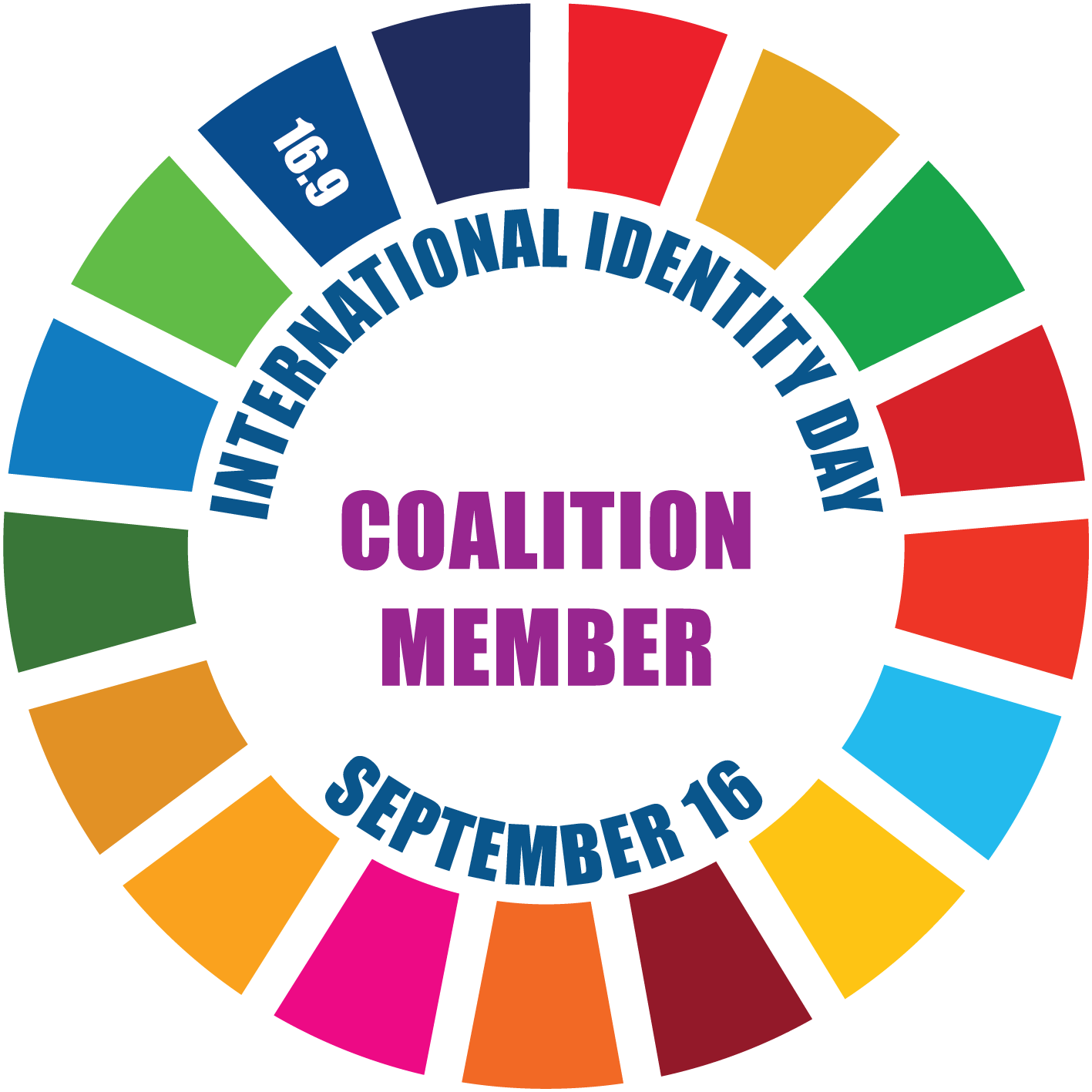Past Events
2020
Machine Learning based Video Blurring and Re-enactment
| Date: | 2020-12-15 (12:30-13:30 CEST) | Location: | EAB Online Seminar |
|---|
Organizer: European Association for Biometrics (EAB)
Attendance is free of charge but registration is required. Registered participants will receive dial-in credentials in the morning of the event.
Speakers: Mickey Cohen
Program
German TeleTrusT Biometrics Working Group
| Date: | 2020-12-08 (10:00-17:00 CEST) | Location: | This will be a virtual meeting. Dial-in credentials will be distributed in early morning of the meeting day. |
|---|
Organizer: German TeleTrusT Biometrics Working Group in cooperation with the European Association of Biometrics
Attendance is free of charge, Registration is required.
Please note that most presentations will be held in german language!
Program
Comparing Biometric Modalities in Real-Case Scenarios: The Smartphone Case
| Date: | 2020-12-01 (12:30-13:30 CEST) | Location: | EAB Online Seminar |
|---|
Organizer: European Association for Biometrics (EAB)
Attendance is free of charge but registration is required. Registered participants will receive dial-in credentials in the morning of the event.
Speakers: Raul Sanchez-Reillo
Program
On the detection of real and synthetic ghosts
| Date: | 2020-11-17 (12:30-13:30 CEST) | Location: | EAB Online Seminar |
|---|
Attendance is free of charge but registration is required. Registered participants will receive dial-in credentials in the morning of the event.
Speakers: Luuk Spreeuwers
Program
Norsk Biometri Forum Meeting
| Date: | 2020-11-12 (09:30-15:30 CEST) | Location: | This meeting will be a virtual meeting. Login-information will be provided in the morning of the meeting via email |
|---|
Organizer: Norwegian Biometric Forum in cooperation with the European Association for Biometrics
Attendance is free of charge, Registration is required
Program
Human Face Recognition: Learning from Biological Deep Networks
| Date: | 2020-11-03 (12:30-13:30 CEST) | Location: | EAB Online Seminar |
|---|
Attendance is free of charge but registration is required. Registered participants will receive dial-in credentials in the morning of the event.
Speakers: Massimo Tistarelli
Program
IPFC 2020 – International Face Performance Conference
| Date: | 2020-10-27 - 2020-10-29 | Location: | NIST, 100 Bureau Drive, Gaithersburg, MD 20899, in the Green Auditorium |
|---|
Organizer: NIST in cooperation with the European Association for Biometrics EAB
Program (ext.)
Fingerprint Presentation Attacks Detection in the Deep Learning Era: a “LivDet” Story
| Date: | 2020-10-21 (12:30-13:30 CEST) | Location: | EAB Online Seminar |
|---|
Attendance is free of charge but registration is required. Registered participants will receive dial-in credentials in the morning of the event.
Speakers: Gian Luca Marcialis
Program
Deepfake detection: humans vs machine
| Date: | 2020-10-06 (12:30-13:30 CEST) | Location: | EAB Online Seminar |
|---|
Attendance is free of charge but registration is required. Registered participants will receive dial-in credentials in the morning of the event.
Speakers: Pavel Korshunov
Program
BIOSIG 2020 – 19th International Conference of the Biometrics Special Interest Group
| Date: | 2020-09-17 - 2020-09-18 | Location: | Virtual Conference; access data will be sent to the participants short before the event. |
|---|
Organizer: GI Special Interest Group BIOSIG in cooperation with BSI, Fraunhofer IGD, JRC, CAST e.V. and IEEE
Program (ext.)
EAB Biometrics Training Event – September 2020
| Date: | 2020-09-17 (09:00 CEST) - 2020-09-18 (15:30 CEST) | Location: | Virtual Conference; access data will be sent to the participants short before the event. |
|---|
Organizer: European Association for Biometrics (EAB)
All meeting times are in Central European Summer Time (CEST).
Speakers: Jim Wayman, Vitomir Štruc, Martin Drahansky, Christoph Busch, Raymond Veldhuis, Richard Guest, Emilio Mordini, Els Kindt and Arun Ross
Program
European Biometrics Max Snijder, Research, and Industry Awards 2020
| Date: | 2020-09-16 (16:30-20:00 CEST) | Location: | Virtual Conference; access data will be sent to the participants short before the event. |
|---|
Organizer: European Association for Biometrics (EAB)
Attendance is free of charge, Registration is required. All meeting times are in Central European Summer Time (CEST).
Program
10th EAB General Assembly
| Date: | 2020-09-14 (18:30-20:30 CEST) | Location: | Virtual Conference; access data will be sent to the participants short before the event. |
|---|
Organizer: European Association for Biometrics (EAB)
This event is for EAB members only. Registration is required!
Program
EAB Research Projects Conference (EAB-RPC) 2020
| Date: | 2020-09-14 (14:45 CEST) - 2020-09-16 (16:00 CEST) | Location: | Virtual Conference; access data will be sent to the participants short before the event. |
|---|
Organizer: The European Association for Biometrics (EAB) in cooperation with the Joint Research Center (DG-JRC) of the European Commission, and Fraunhofer IGD.
Organizing Committee: Javier Galbally (Scientific Chair, EC DG-JRC), Farzin Deravi (Round-Table Chair, EAB – Univ. of Kent), Dinusha Frings (Round-Table Co-Chair, Citizen ID), Fernando Alonso-Fernandez (Demo and Posters Chair, EAB – Halmstad Univ.), Alexander Nouak (Publicity and Local Committee Chair, Chairman of EAB – Fraunhofer ICT Group), Christoph Busch (Local Committee Co-Chair, Hochschule Darmstadt)
Fees are non-refundable as from 7 days before the start of the event.
Note: If you are not yet an EAB-member, please consider to register for membership first (starting from 95,00 € per year). You then can register for the EAB-RPC as an EAB-member for only 240,00 € instead of 360,00 €, which means an overall saving of 25,00 €!
Program
German TeleTrusT Biometrics Working Group
| Date: | 2020-09-14 (09:30-14:30 CEST) | Location: | Virtual Conference; access data will be sent to the participants short before the event. |
|---|
Organizer: German TeleTrusT Biometrics Working Group in cooperation with the European Association of Biometrics
Attendance is free of charge, Registration is required. All meeting times are in Central European Summer Time (CEST).
Program
EAB Members Meeting: Commenting a paper of the EDPS
| Date: | 2020-07-20 (12:30-14:30 CEST) | Location: | Virtual Meeting |
|---|
Organizer: European Association for Biometrics (EAB)
Attendance is for EAB members only and free of charge. Registration is required!
Program
Advent of contactless biometric technologies
| Date: | 2020-07-06 (12:30-13:30 CEST) | Location: | EAB Online Seminar |
|---|
Organizer: European Association for Biometrics (EAB)
Attendance is free of charge but registration is required. Registered participants will receive dial-in credentials in the morning of the event.
Speakers: Hervé Jarosz, IDEMIA
Program
Modeling the finger-vein imaging process
| Date: | 2020-06-29 (12:30-13:30 CEST) | Location: | EAB Online Seminar |
|---|
Organizer: European Association for Biometrics (EAB)
Attendance is free of charge but registration is required. Registered participants will receive dial-in credentials in the morning of the event.
Speakers: Raymond Veldhuis, University of Twente
Program
Biometric quality: Avoiding the GIGO principle
| Date: | 2020-06-22 (12:30-13:30 CEST) | Location: | EAB Online Seminar |
|---|
Organizer: European Association for Biometrics (EAB)
Attendance is free of charge but registration is required. Registered participants will receive dial-in credentials in the morning of the event.
Speakers: Javier Galbally/JRC
Program
Biometric Template Protection and Evaluation
| Date: | 2020-06-15 (12:30-13:30 CEST) | Location: | EAB Online Seminar |
|---|
Organizer: European Association for Biometrics (EAB)
Attendance is free of charge but registration is required. Registered participants will receive dial-in credentials in the morning of the event.
Speakers: Marta Gomez-Barrero, Hochschule Ansbach
Program
17th International Summer School for Advanced Studies on Biometrics for Secure Authentication: Forensics and Identity Science for Human-Centered Applications
| Date: | 2020-06-08 - 2020-06-12 | Location: | Virtual lectures |
|---|
Organizer: Computer Vision Laboratory DAP, University of Sassari, Italy in cooperation with the European Association for Biometrics
Speakers: Massimo Tistarelli, Josef Bigun, Enrico Grosso, Anil K. Jain ...
Program (ext.)
Efficient biometric identification: Current trends, challenges, and research
| Date: | 2020-06-02 (12:30-13:30 CEST) | Location: | Online Seminar with BigBlueButton |
|---|
Organizer: European Association for Biometrics (EAB)
Attendance is free of charge but registration is required. Registered participants will receive dial-in credentials in the morning of the event.
Speakers: Pawel Drozdowski, Hochschule Darmstadt
Program
Morphing Attack Detection – State of the Art and Challenges
| Date: | 2020-05-18 (12:30-13:30 CEST) | Location: | Online Seminar with BigBlueButton |
|---|
Organizer: European Association for Biometrics (EAB)
Attendance is free of charge but registration is required. Registered participants will receive dial-in credentials in the morning of the event.
Speakers: Christoph Busch
Program
Norsk Biometri Forum Meeting
| Date: | 2020-05-07 (09:00-15:00 CEST) | Location: | This meeting will be a virtual meeting. Login-information will be provided in the morning of the meeting via email |
|---|
Organizer: Norwegian Biometric Forum in cooperation with the European Association for Biometrics
Attendance is free of charge, Registration is required
Program
IWBF 2020 – 8th International Workshop on Biometrics and Forensics
| Date: | 2020-04-29 - 2020-04-30 | Location: | Centre for Telecommunications and Multimedia INESC TEC, Campus da FEUP, Rua Dr Roberto Frias, 4200-465 Porto, Portugal |
|---|
Organizer: Institute for Systems and Computer Engineering, Technology and Science (INESC TEC) together with the Norwegian University of Science and Technology (NTNU) in cooperation with the European Association for Biometrics EAB
Program (ext.)
German TeleTrusT Biometrics Working Group
| Date: | 2020-03-17 (10:00-17:00 CEST) | Location: | Hochschule Darmstadt, Schoefferstrasse 8b, 64295 Darmstadt, Germany |
|---|
Organizer: German TeleTrusT Biometrics Working Group in cooperation with the European Association of Biometrics
Due to travel restrictions for presenters and most participants caused by COVID-19 we are foced to cancel the event. We are sorry!
Program
ProfitCard 2020: meet the digital payment challenge
| Date: | 2020-03-10 (10:00 CEST) - 2020-03-11 (15:30 CEST) | Location: | SUPER concept space – Rooftop Bikini Berlin, Budapester Straße 50, 10787 Berlin |
|---|
Organizer: inTIME berlin in cooperation with the European Association for Biometrics
Please note that most of the talks will be held in german language.
Program (ext.)
EAB/NBLAW 2020 – Norwegian Biometrics Laboratory Annual Workshop 2020
| Date: | 2020-03-04 (09:30-15:00 CEST) | Location: | Room Eureka 1/3, Norwegian University of Science and Technology, Gjøvik, Norway |
|---|
Organizer: Norwegian Biometrics Laboratory (NBL) in cooperation with the European Association for Biometrics (EAB)
Attendance if free of charge, Registration is required!
Program
EAB Winter Workshop on Presentation Attack Detection (PAD) Evaluation and Certification
| Date: | 2020-02-20 (13:00 CEST) - 2020-02-21 (16:00 CEST) | Location: | Centre du Parc, Rue Marconi 19, 1920 Martigny, Switzerland |
|---|
Organizer: European Association for Biometrics (EAB) and Idiap Research Institute
Program




![EAB-RPC 2020 Conference Report [Banner] EAB-RPC 2020 Conference Report](/images/banners/Banner-EABRPC2020-Report.png)









